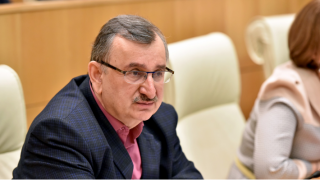Whilst talking about the GEL exchange rate on air on Rustavi 2, Roman Gotsiridze focused upon the disproportional spending from the Government Reserve Fund. He pointed out: “The excessive expenditure of the pre-election period, including pre-election construction, was funded from the Prime Minister’s Reserve Fund. What is cynical, however, is that the distribution of wages for this work started on 7 October 2016 and continued until 24 October 2016.” In his interview with FactCheck, Mr Gotsiridze also talked about the excessive spending from the Fund as compared to the initial plan.
FactCheck took interest in the accuracy of this statement.
In the 2016 state budget the Parliament of Georgia designated GEL 50 million for the Government Reserve Fund. According to the information of the Ministry of Finance of Georgia, within seven months (including July), the Government Reserve Fund had already allocated GEL 65 million (GEL 49 million had already been transferred). According to the September 2016 report, the difference between the allocated and transferred amounts of money was GEL 25 million.
In the October implementation report, the difference between already implemented work and the payments for work amounted to GEL 17 million which is about GEL 8 million less than in the previous month. This means that the government did in fact repay part of the sum it owed during the month of October.
In total, the Government Reserve Fund had implemented work valued at GEL 146 million as of October 2016 with GEL 129 million of this already having been transferred. This means that the Government Reserve Fund has already spent GEL 79 million more than initially planned in the budget.
The amount of money paid from the Reserve Fund in September equalled GEL 87 million whilst the sum had reached GEL 129 million by the end of October. The GEL 41 million transferred in October was spent on remuneration for the work done during the previous month. In addition, transferring such a large amount of money within just one month clearly indicates disproportional spending.
The State Audit Service Report focuses upon the Government Reserve Fund. The report states that the amount of money in the Fund had exceeded the amount determined by the state budget by 208% (GEL 104 million) by August 2016. “This is especially notable if we take into consideration that the implementation of the sums of money allocated from the Government Reserve Fund are not subject to limitations by the Budget Code of Georgia as is the case for the distribution of assets between different budget programmes and sub-programmes. The regulations concerning acquisitions are also not applicable in the case of the Reserve Fund,” reads the State Audit Service’s Report.
The report also discusses problems in terms of planning. The State Audit Service points out that the Government Reserve Fund had mainly conducted systematic payments which could have been pre-planned and allocated in terms of the internal budgets of the appropriate budgetary structures.
In order to see the whole picture better and determine whether or not the spending from the Government Reserve Fund is systematic and connected to preparatory work for the upcoming winter, FactCheck looked into the budget reports of the previous years as well.
According to the 2015 state budget, the Government Reserve Fund was given GEL 85 million whilst the amount of money spent by the end of the year had reached GEL 168 million according to State Treasury statistics.
The 2014 state budget set the Government Reserve Fund at GEL 50 million. The amount of money spent by the end of the year was GEL 83 million which is about GEL 33 million more than initially planned. It should be noted that a large part of this money was spent after August.
Conclusion
FactCheck’s study found that the government has indeed been disproportionately spending the money from its Reserve Fund and that the bulk of this money was spent after September 2016. The State Audit Service Report points out that in the case of correct budgetary planning it would be possible to allocate the money necessary for all of these projects in the internal budgets of the budgetary structures. The report also indicates that the money spent from the Government Reserve Fund is not subject to the same constraints and limitations as is the case for all other budgetary structures.
It is a fact that a disproportionately large sum of money was spent from the Government Reserve Fund in October; however, FactCheck cannot claim that this money was spent for funding specific projects for the pre-election period and was used to influence the outcomes of the elections. It should also be pointed out that the Government Reserve Fund spent more money in previous years by year end than originally planned.
Despite all of this, it is a fact that the Government Reserve Fund did spend more money than initially planned for 2016. However, it should also be noted that the deficit spending from the Government Reserve Fund was evident before the start of the pre-election period as well and it simply accelerated in the period from August to October 2016. As for the part of the statement saying that the government starting paying for the work done in the previous months only in October, it is indeed correct as the government paid one-third of the overall value of the implemented work in October.
FactCheck concludes that Roman Gotsiridze’s statement is MOSTLY TRUE.
Tags:








